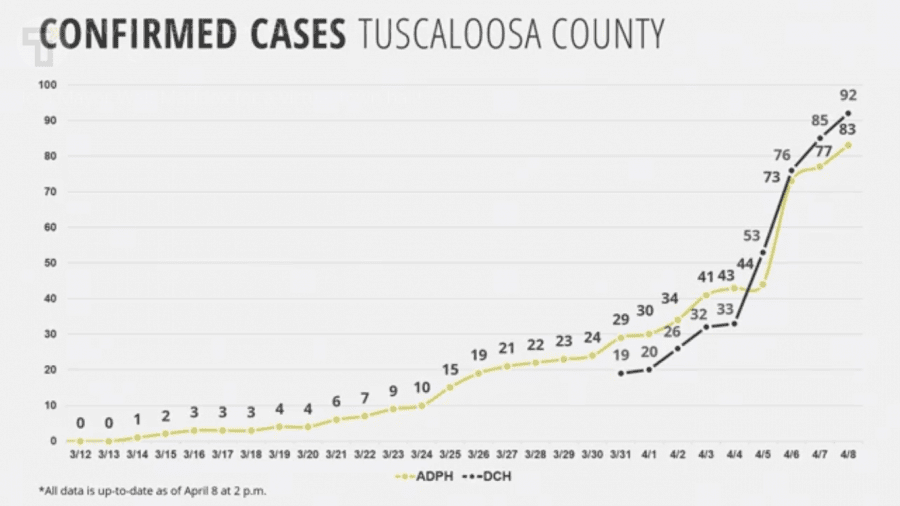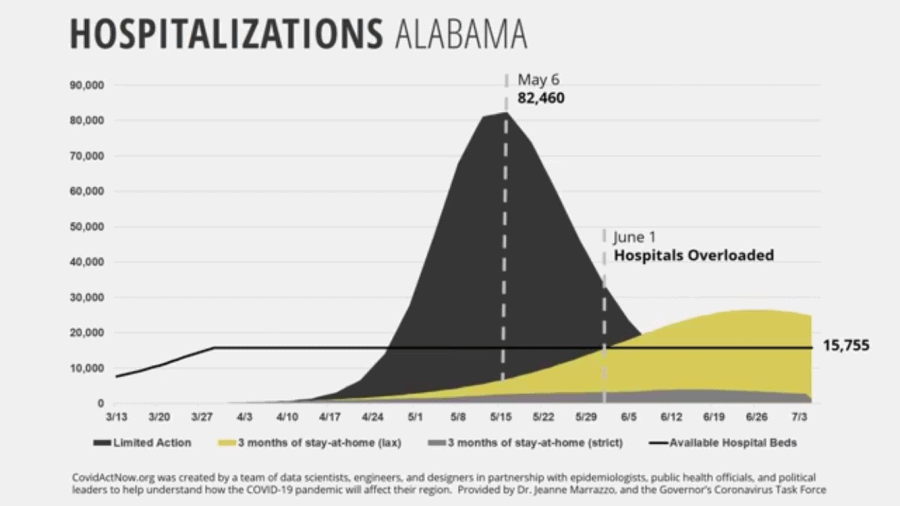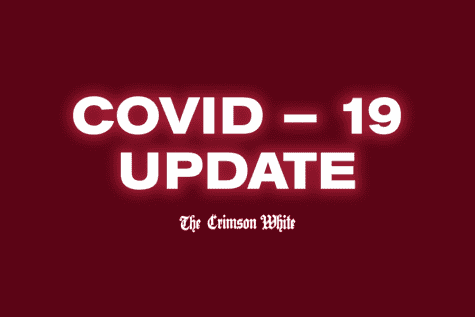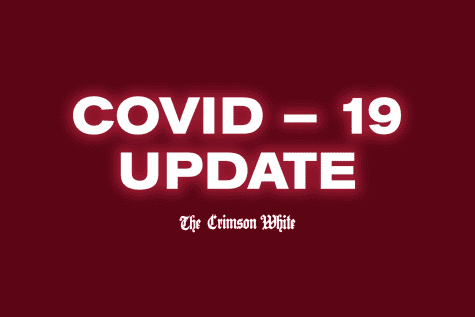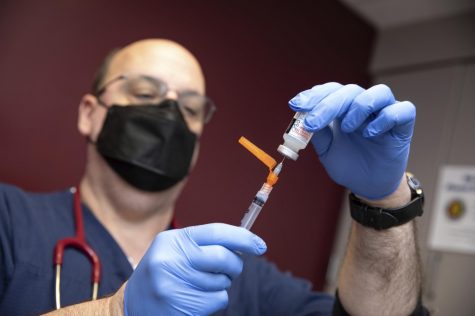Data: Three months of shelter-in-place could significantly flatten the curve
April 8, 2020
With testing and resource shortages nationwide, data on confirmed COVID-19 cases hasn’t always been reliable. And, in Tuscaloosa, an early testing blunder by the regional hospital exacerbated the issue. But, after an early April spike, Tuscaloosa Mayor Walt Maddox thinks the reports are getting clearer.
“At this point, [the lag] doesn’t really matter; we’re at the point we need to be,” Maddox said in response to a question about testing lags at a virtual town hall on Wednesday. “Moving forward, we’ll look at the data, and it will determine our decisions.”
DATA DROVE
Last week, Maddox said that April would be the month that determines the trajectory of COVID-19. So far, Tuscaloosa has 83 confirmed cases through the Alabama Public Health Department (ADPH) and 92 through DCH Regional Medical Center. As predicted, cases spiked on April 5 and are projected to continue moving up.
City attorney Glenda Webb clarified that DCH was not the only hospital reporting testing numbers, but it has the most direct relationship with ADPH. Additional information coming in from private labs, as well as urgent cares and the local Veterans Affairs Medical Center, could take a bit longer.
“I have reason to believe that those [numbers] are not quite up to date at this point,” she said, noting that the city is currently working to synthesize cases across clinics.
The key to looking at the data, however, is being able to analyze the rate of spread.
“If we can slow the rate of spread, then we can keep our health care system in line to meet the demand,” Maddox said.
This is the logic behind flattening the curve, which can be shown by the yellow portion in the graphs below.
One of Maddox’s biggest worries is overburdening the hospital. In the above graphs, it’s unlikely that Tuscaloosa could see itself anywhere on that black curve, mainly because the city was one of the first in the state to enforce social distancing. If the city continues to enforce a stay-at-home order, it would take hospitals up to a month longer to reach their bed limit, with a much lower surplus of patients.
But, he worried that even if Tuscaloosa does its part to flatten the curve, DCH serves 11 other counties that aren’t following the same guidelines.
“If we do our part, we don’t know if it’s going to work in other counties,” Maddox said. “We have to take a regional perspective in all of this.”
ECONOMIC IMPACT
Several residents submitted questions in this week’s town hall about labor conditions for local and city employees. With 29 city employees quarantined, the city is still putting most of its staff to work, including firefighters, garbage collectors and the police force.
“Ensuring that we have a workforce to meet your needs goes into every decision that we’re making related to this event,” Maddox said.
Sonya McKinstry, who has served District 7 on the city council since 2013, said one of her biggest concerns was an inevitable recession.
“Right now I think we have to do whatever we have to do to run the city and also to address the emergency needs that we have,” McKinstry said. “It may be a lot of sacrifices, but being able to make sure that staff is getting paid, that we can still provide essential services and not be totally in the red.”
Tuscaloosa hasn’t faced a financial crisis like this since the Great Depression. Maddox noted, as he has in past town halls, that the city is facing a $1.8 million to $2.5 million loss per month.
“The most vulnerable in our community are going to be more vulnerable,” Maddox said. “We don’t have all the resources.”
Will Elevate funds be used to offset these costs?
It’s too premature to say yes, but Maddox said he’d be foolish to say no.
“If there was a potential to elevate ourselves out of this without jeopardizing the future of this city, the council I’m sure would be open to that,” he said.
How is Tuscaloosa providing relief to the most vulnerable in our community?
Incident Command, a city task force, is coordinating some relief efforts in vulnerable communities. Maddox also noted the efforts United Way was making to match donations and provide aid for those in immediate need.
Testing access, however, continues to be an issue for black and Latino residents. Maddox said the city is currently working with church, community and social services to assess needs. Webb encouraged residents to fill out a survey, which will be live on the website soon and help the city determine areas with specific needs.
Will there be any layoffs for city employees?
It’s unlikely. But if cases stretch into this time next year, Maddox said, that’s a different equation.
He noted the city’s strong reserves and ability to bounce back after the April 27, 2011, tornado without laying off workers or owing a dime, and he’s confident the city can handle another blowback without sacrificing pay.
Will the city be offering hazardous pay for city employees?
Maddox said that hazard pay has been a contentious issue among mayors. Put simply, he’d like to do this, but the city can’t afford it.
“I don’t think it would be responsible of me to go to the city council with something like that,” Maddox said. “Once we get through this, we’ll take a step back.”
In lieu of an immediate reward, Maddox anticipates making a recommendation in the fiscal 2021 budget to recognize city employees who are in direct contact with residents or who are performing more dangerous tasks on a daily basis.
Will social service agencies be eligible for local relief?
Maddox said the city hasn’t gotten there yet, but they’ll review options for federal and state aid on April 21 and will begin a broader discussion on the 28th.
Does the city pay for COVID-19 tests?
No.
How will COVID-19 impact Tuscaloosa’s census?
It can impact it greatly. For every person who doesn’t complete the census, the city could lose out on $1,600 to $2,000 annually. Hitting 100,000 residents helps the city apply for additional aid and grants.
“If I can encourage you to do anything, please make sure you complete the census,” Maddox said. “It’s a great way to help Tuscaloosa.”
Currently the city is way under reports from 2010. That year, 66% of total people and only 58% of UA students completed the census. For more information on the census, click here.
SERVICES AND RECREATION
There are a few exceptions to the current shelter-in-place order that allow for physical exercise and vital city services.
Recycling
Though the city has halted recycling services, drop-off recycling will be available on May 20 at the Richard A. Curry Environmental Complex from 7 a.m. to 7 p.m.
The University of Alabama’s recycling drop off remains open from 8 a.m. to 4 p.m. Monday through Friday and 8 a.m. to noon on Saturday. They are no longer accepting glass recycling but are still taking cardboard, paper, plastic, aluminum and tin cans. Recycling must be sorted into the correct bins.
Can I still go to church?
Church services must be remote or drive-in only.
In McKinstry’s district, ministers often serve as community leaders, especially in times of crisis. But churches have been slow to adapt to social distancing regulations. As she warned residents of a tough week ahead, she said the concerns of church-goers weren’t just about weekly praise; they were about having access to aid and guidance in tough times.
“This is a hard week for Jesus, too,” a constituent told McKinstry.
Though ministers are now complying with the guidelines and adapting to online worship, church-sponsored services, such as volunteer work, face additional challenges.
“It is antithetical to everything we want to do as people in this community,” Maddox said, noting that lending a hand can be difficult when distance is encouraged.
With Easter around the corner, Maddox suggested that this could be a time to start new traditions with loved ones.
“The resurrection is about life, and one of the best ways we can celebrate life is by practicing social distancing,” he said. “As I can recall, the first Easter was lightly attended. You know what, let’s make this one lightly attended, but let’s also make it one of the most meaningful in our lives.”
Are the parks and lakes in Tuscaloosa open?
No, you can’t congregate on the cliffs at Lake Nicol anymore. But while the majority of parks are closed, the city tried an experiment over the weekend by opening Palmore, Snow Hinton, Sokol and Bowers parks, in addition to reopening the boat ramps on Lake Tuscaloosa. The Riverwalk is also still open.
These measures will be reevaluated daily.
How does opening the parks promote social distancing and flattening the curve?
Maddox said the city opened some parks to promote mental and physical health. He stressed, however, that the city can always institute more strict guidelines if people are not following social distancing.
“We’re going to continue to do what we believe is right, and if it doesn’t work, we’ll change it,” Maddox said.
Is the tag department open?
Yes, virtually. The tag department is accepting online registration and email registration and has pushed the due date back to May 15.
Will the current moratorium on multi-family apartments continue?
The existing moratorium is still in order but will expire May 31.
What happens after the governor’s order is over?
Gov. Kay Ivey’s shelter-in-place order will be reevaluated on April 30. Maddox said the city is going to consider what’s best for Tuscaloosa under council approval.
Maddox said he didn’t foresee the order being lifted anytime soon, as it would be even more detrimental to local businesses if they had to start and stop again.
“None of us want to go through this again,” Maddox said.
The next Mayor’s Town Hall will be Friday, April 10, at 3 p.m. Submit your questions at tuscaloosa.com/covid19 and tune in for answers.

